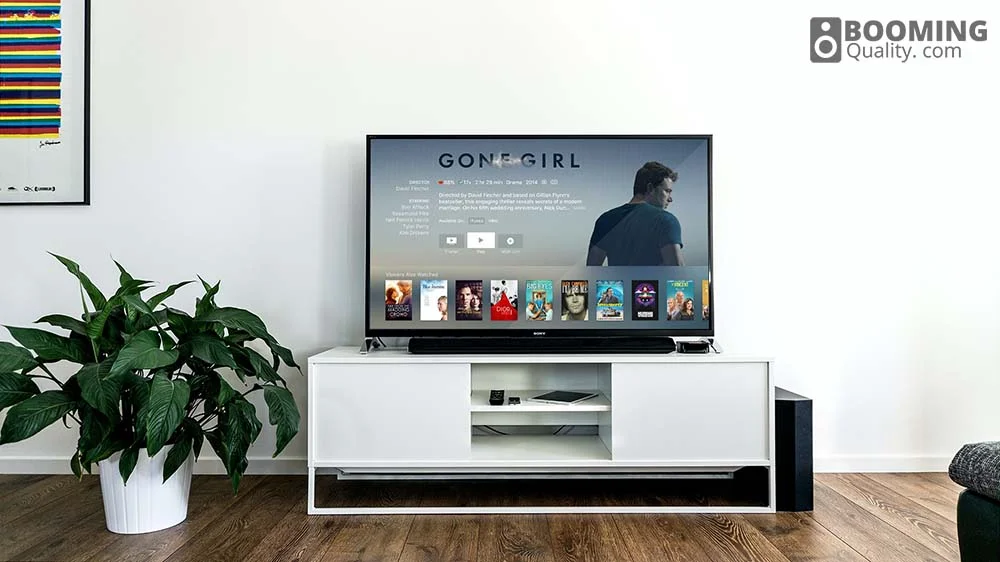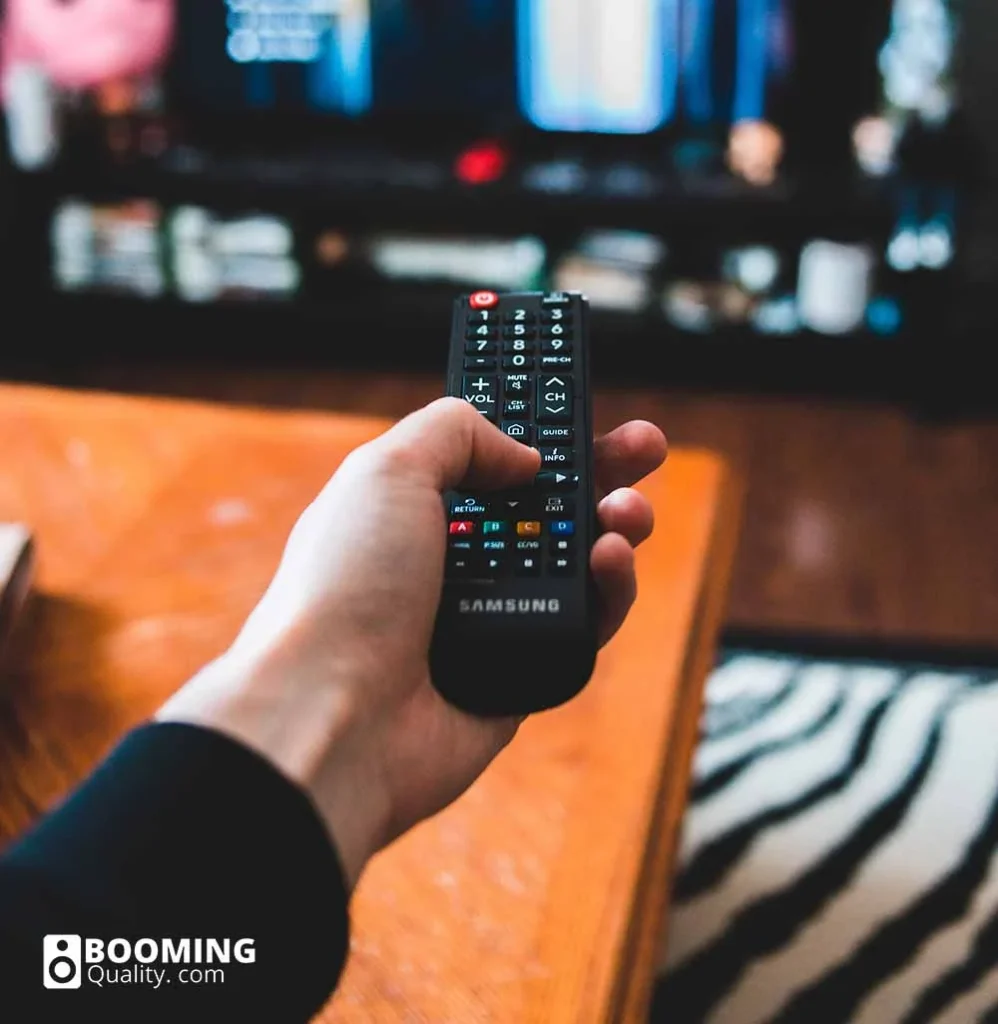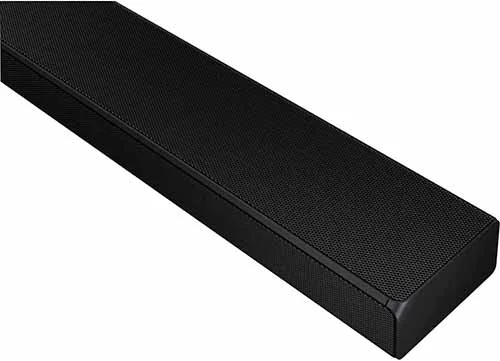
In today’s world of audio innovation, the convenience of wireless connectivity has become paramount. If you own a Samsung soundbar, you’re already on the path to enhancing your home audio experience.
But have you ever wondered how to seamlessly connect it to your devices via Bluetooth, eliminating the need for messy cables and opening the door to a world of high-quality, wireless audio streaming?
In this guide, we’ll walk you through the process of connecting your Samsung soundbar to Bluetooth-enabled devices.
This step-by-step tutorial will unlock the power of Bluetooth connectivity, allowing you to experience audio in a whole new light.
Get ready to elevate your home entertainment game and embrace the wireless future of sound.

Ensure both your soundbar and the connecting device are in pairing mode for a smooth connection.
Check for any potential interference or obstacles that may affect the Bluetooth signal strength.
Explore your soundbar settings to customize audio preferences and ensure an optimal listening experience.
Preparing Your Samsung Soundbar
Before you can start enjoying the wireless bliss of Bluetooth connectivity with your Samsung soundbar, it’s crucial to ensure that your soundbar is set up correctly.
Here, we’ll guide you through the initial steps to prepare your Samsung soundbar for the pairing process.
1. Unbox and Inspect:
- Carefully unbox your Samsung soundbar, taking note of all the components included in the package. Ensure that you have the soundbar itself, any necessary power cables, and the user manual.
2. Choose an Ideal Location:
- Select an optimal location for your soundbar. It should be close to the devices you want to connect via Bluetooth, such as your TV, smartphone, tablet, or laptop. Additionally, ensure that the soundbar is positioned within the range of your Bluetooth devices.
3. Power On the Soundbar:
- Connect your Samsung soundbar to a power source using the provided power cable. Turn on the soundbar and allow it to power up fully. The soundbar should display indicator lights or an LED screen to indicate its status.
4. Access the User Manual:
- To ensure you’re following the specific instructions for your model, consult the user manual included with your Samsung soundbar. The manual provides essential information about your soundbar’s features and how to navigate its settings.
5. Update Firmware (If Necessary):
- It’s a good practice to check for and install any available firmware updates for your soundbar. These updates can enhance performance and ensure compatibility with various devices. Check the user manual for guidance on updating the firmware.
By preparing your Samsung soundbar in these initial steps, you’re setting the stage for a smooth and trouble-free Bluetooth connection process.
Once your soundbar is powered on and ready to go, you’ll be ready to pair it with your Bluetooth devices for a wireless audio experience.

Connecting to a Mobile Device
1. Enable Bluetooth on Your Mobile Device:
- Start by unlocking your smartphone or tablet and navigating to the settings menu.
- Locate the “Bluetooth” option and toggle it on. This action makes your mobile device discoverable to nearby Bluetooth devices.
2. Access the Soundbar’s Bluetooth Mode:
- On your Samsung soundbar, activate the Bluetooth mode. Typically, you can do this by pressing the dedicated Bluetooth button on your soundbar’s remote control or using the control panel on the soundbar itself. Refer to your soundbar’s user manual for specific instructions on how to initiate Bluetooth pairing.
3. Search for Available Devices:
- Once Bluetooth mode is active on your soundbar, it will search for nearby Bluetooth devices to pair with. On your mobile device, you should see your Samsung soundbar listed among the available devices. Tap on your soundbar to initiate the pairing process.
4. Confirm the Pairing:
- Your mobile device will prompt you to confirm the pairing request. Accept the pairing request, and your soundbar and mobile device will establish a connection. Once connected, your mobile device’s audio output will be routed to the soundbar.
5. Test the Connection:
- To ensure a successful connection, play a sample audio file or video on your mobile device. You should hear the audio through the Samsung soundbar. This confirms that the Bluetooth connection is active and working correctly.
6. Adjust Volume and Enjoy:
- You can now use your mobile device’s volume controls to adjust the sound level on the Samsung soundbar. Enjoy your favorite music, podcasts, or video content with enhanced audio quality through the soundbar’s powerful speakers.
(Remember that the specific steps may vary slightly depending on your Samsung soundbar model and your mobile device’s operating system.)
Pairing with Your Smart TV
1. TV Bluetooth Activation:
- Begin by turning on your Smart TV and accessing the settings menu.
- Navigate to the Bluetooth or Sound options. Activate the Bluetooth feature on your TV, which may also be referred to as “Pairing Mode” or “Discovery Mode.”
2. Initiate Bluetooth Mode on Your Soundbar:
- On your Samsung soundbar, activate the Bluetooth mode. This can usually be done through the soundbar’s remote control or the control panel on the soundbar itself.
- Consult your soundbar’s user manual for specific instructions on how to enable Bluetooth pairing mode.
3. Search for Available Devices:
- With Bluetooth activated on both your Smart TV and soundbar, your TV will scan for nearby Bluetooth devices to pair with.
- On your TV’s Bluetooth settings, you should see your Samsung soundbar listed among the available devices. Select your soundbar to start the pairing process.
4. Confirm Pairing:
- When prompted, confirm the pairing request on your Smart TV. This step may involve entering a PIN code or simply agreeing to the pairing request.
- Ensure that the TV recognizes and successfully pairs with your soundbar.
5. Test the Connection:
- To confirm a successful connection, play a video or audio content on your Smart TV. The sound should be directed to your Samsung soundbar, providing an enhanced and immersive audio experience.
- You may need to adjust the TV’s audio output settings to ensure the sound is routed through the soundbar.
6. Adjust Settings for Optimal Performance:
- Access the sound settings on your Smart TV and soundbar to fine-tune the audio experience.
- You can adjust volume levels, sound modes, and equalization settings to match your preferences and the type of content you’re enjoying.
7. Enjoy Enhanced Audio:
- With your Samsung soundbar paired with your Smart TV, you’re now ready to enjoy an audio experience in the comfort of your own home.
(Note that the specific steps and options may vary depending on your Smart TV model and your Samsung soundbar.)
If you have an LG OLED CX see what the best soundbar is for it.
Syncing with a Tablet or Laptop
1. Activate Bluetooth on Your Tablet or Laptop:
- Begin by turning on your tablet or laptop and accessing the settings or control panel.
- Locate the Bluetooth option and enable it. This action makes your device discoverable to nearby Bluetooth devices.
2. Enable Bluetooth Mode on Your Soundbar:
- On your Samsung soundbar, activate the Bluetooth mode.
- This can typically be done via the soundbar’s remote control or control panel. Consult your soundbar’s user manual for specific instructions on initiating Bluetooth pairing mode.
3. Discover Nearby Devices:
- With Bluetooth activated on both your tablet or laptop and your soundbar, your device will search for available Bluetooth devices.
- In your device’s Bluetooth settings, you should see your Samsung soundbar listed among the available devices. Tap on the soundbar to initiate the pairing process.
4. Confirm Pairing:
- Your tablet or laptop will prompt you to confirm the pairing request from your soundbar.
- Accept the pairing request to establish a connection. Once paired, the tablet or laptop’s audio output will be routed to your Samsung soundbar.
5. Test the Connection:
- To confirm a successful connection, play an audio or video file on your tablet or laptop.
- You should hear the sound through your soundbar, verifying that the Bluetooth connection is established and functioning correctly.
6. Adjust Volume and Enjoy:
- Use the volume controls on your tablet or laptop to adjust the sound level, which will be reproduced through the Samsung soundbar.
7. Customize Settings for Optimal Audio:
- For the best listening experience, explore the sound settings on both your tablet or laptop and the soundbar.
- You can fine-tune the audio output, choose sound modes, and adjust equalization settings to match your preferences and content type.
(Keep in mind that the specific steps may vary slightly depending on your soundbar model and the operating system of your tablet or laptop.)
Here, we have attached a helpful video if you are looking to connect your Samsung soundbar to your TV using Bluetooth.
Troubleshooting Bluetooth Connection Issues
While connecting your Samsung soundbar to your device via Bluetooth is typically a straightforward process, occasional hiccups can occur.
It’s essential to be aware of common Bluetooth connection issues and how to troubleshoot them effectively:
Device Compatibility
Before diving into troubleshooting, double-check that your device is compatible with your Samsung soundbar.
Ensure your device supports Bluetooth and that it’s within the soundbar’s Bluetooth range, typically around 30 feet (9 meters).
Bluetooth Mode Activation
Confirm that your soundbar is in Bluetooth pairing mode.
Some models have a dedicated Bluetooth button on the remote or control panel, while others require you to access the sound settings to enable Bluetooth mode.
Pairing Limitations
Bluetooth devices can have pairing limitations. If your soundbar is already connected to one device, it may not accept connections from another until you disconnect the first device.
Clear Paired Devices
If you’re having trouble connecting a new device, it might help to clear the list of previously paired devices on your soundbar.
Refer to your soundbar’s user manual for instructions on how to do this.
Bluetooth Interference
Bluetooth signals can be disrupted by interference from other electronic devices or Wi-Fi networks.
Ensure there are minimal obstructions and that no other devices are interfering with the signal.
Firmware Updates
Check if your soundbar’s firmware is up to date. Manufacturers often release updates to improve Bluetooth connectivity and overall performance.
Visit Samsung’s official website for firmware updates specific to your soundbar model.
Audio Source Settings
Sometimes, the issue may be with the audio source device. Make sure the Bluetooth settings on your smartphone, tablet, or TV are correctly configured.
Try disconnecting and reconnecting the device to refresh the connection.
Reboot and Reset
If issues persist, a simple reboot of both the soundbar and the connected device may help.
Additionally, you can perform a factory reset on your soundbar to clear any potential conflicts in settings.
Distance and Obstacles
The Bluetooth range can be affected by distance and obstacles.
Ensure your device is within the recommended Bluetooth range and that there are no large obstructions or walls blocking the signal path.
Bluetooth Profiles
Verify that the Bluetooth profiles supported by your device and soundbar match.
Common profiles include A2DP (Advanced Audio Distribution Profile) and AVRCP (Audio/Video Remote Control Profile). Ensure both devices support the same profiles for compatibility.

Exploring Samsung Soundbar Features
Samsung soundbars are renowned for their innovative features, designed to provide an exceptional audio experience and seamless integration into your entertainment setup.
One of their standout features is the immersive sound quality they deliver. With advanced audio technologies such as Dolby Atmos and DTS:X, you can experience three-dimensional, room-filling sound that envelops you in your favorite movies, music, and games.
Samsung soundbars often come equipped with Acoustic Beam technology, which precisely directs sound to create a more immersive listening experience, replicating the feeling of being in a movie theater.
Another remarkable feature is the Adaptive Sound technology, which automatically optimizes sound settings based on the content you’re watching. This ensures that whether it’s dialogue in a movie or high-energy music, the soundbar adjusts to make every word and beat crystal clear. This feature is also helpful for those with hearing impairments.
Wireless connectivity, including Bluetooth, Wi-Fi, and NFC, allows for seamless device connections without the hassle of cords and cables.
Samsung soundbars often support smart home integration, allowing you to control your soundbar with voice commands via popular voice assistants like Bixby or Alexa.
Multi-channel audio with upward-firing speakers creates a cinematic experience with height and depth in sound.
Wireless subwoofers provide powerful, room-shaking bass, and customizable sound modes, such as Movie, Music, and Game, allowing you to tailor the audio experience to your content.
With these innovative features, Samsung soundbars have the features to make you enjoy your content to the maximum.
FAQs
How do I get my TV to recognize my sound bar?
Here are some basic steps to get your TV to recognize your soundbar, please note this is dependent on the TV and soundbar you have. It is always best to refer to your manufacturer manuals but here are some general steps for you to try out.
- Connect Your Soundbar: Ensure the soundbar is correctly connected to your TV using the appropriate cables or wireless pairing.
- Select the Correct Input: Use your TV remote to choose the input source on your TV that corresponds to the connection with your soundbar (e.g., HDMI ARC or optical).
- Configure Audio Settings: In your TV’s audio settings, set the audio output to route sound through the selected input connected to the soundbar.
- Enable HDMI-CEC (Optional): If supported, enable HDMI-CEC to facilitate communication between your TV and soundbar, allowing for unified control and audio management.
Is it better to connect a soundbar with HDMI or Optical?
The choice between connecting your soundbar to your TV via HDMI or optical depends on your specific needs and equipment compatibility.
HDMI offers the convenience of transmitting both audio and video through a single cable and supports high-resolution audio formats, making it ideal for home theater setups with HDMI-ARC support.
In contrast, optical connections, while widely compatible and reliable for audio, require a separate video cable and are not suited for transmitting the highest-resolution audio formats.
The choice ultimately hinges on your setup and priorities, with HDMI offering integration advantages, and optical offering compatibility and simplicity.
How do I connect my soundbar to my TV without HDMI ARC?
To connect your soundbar to your TV without HDMI ARC, you have two primary options: using an optical cable (TOSLINK) or an analog cable.
First, check if both your TV and soundbar have the necessary input/output ports. If both devices have optical ports, use an optical cable to connect them.
Plug one end into the TV’s optical output and the other into the soundbar’s optical input. Select the optical input on your soundbar, configure your TV’s audio settings, and adjust the volume accordingly.
If neither device has optical ports, you can use analog cables (red and white RCA connectors). Connect them between the TV’s audio output and the soundbar’s analog input, select the analog input on your soundbar, and ensure your TV routes audio to this connection in its audio settings.
These methods allow you to successfully link your soundbar to your TV, enhancing your audio experience without HDMI ARC.
Remember to refer to the user manuals for specific instructions based on your TV and soundbar models.

Written By Emily
If you like this article, we have plenty more on soundbars for you to check out!
